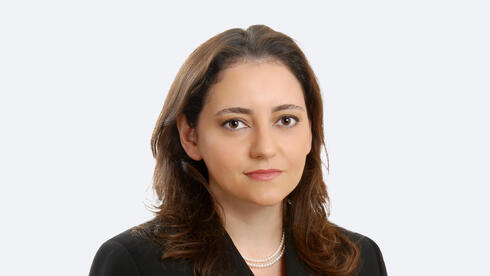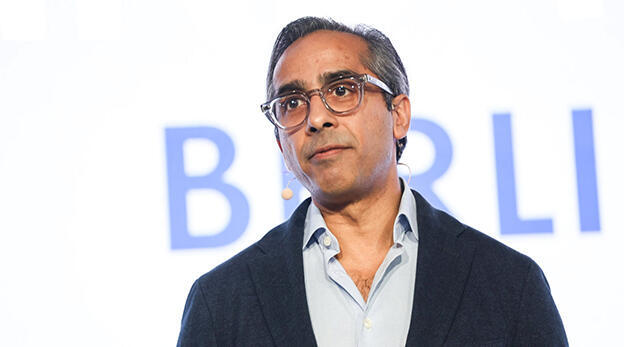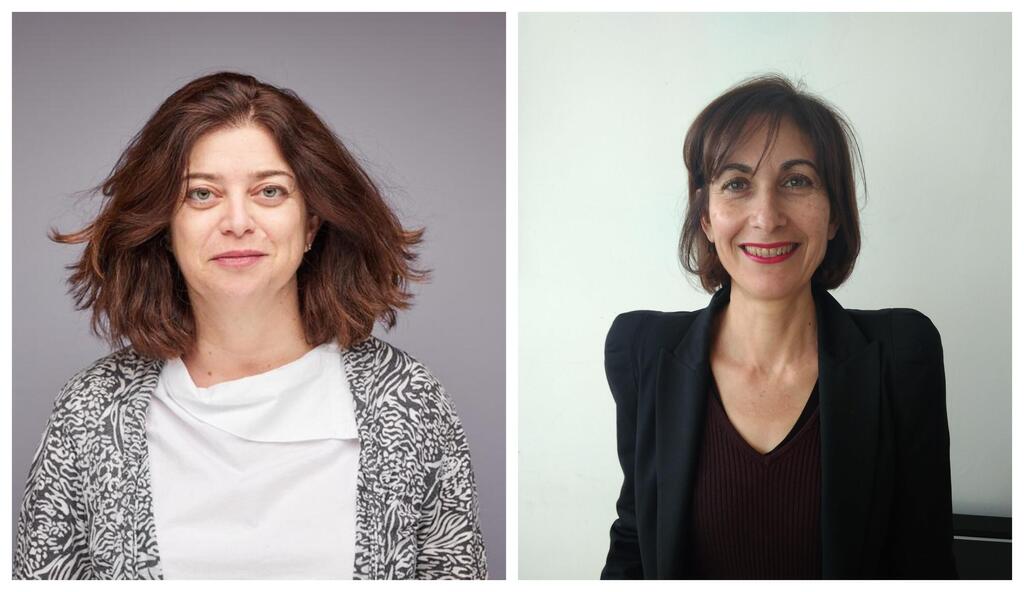
Boarding Pass
As IVF demand surges, Israel’s IMMA Health offers a scalable solution
The company has raised a total of $1.1 million to develop the first robotic, self-operated ultrasound system designed for women to use at home.
Since the 1980s, IVF monitoring has relied on in-clinic transvaginal ultrasounds, multiple times per cycle, often at inconvenient hours. Now, IMMA Health is shaking up that model. With a patient-operated robotic ultrasound device, the founders are pushing fertility care into the digital era by making IVF smarter, more scalable, and more humane.
“Transvaginal ultrasound is a critical part of IVF, performed multiple times per cycle to monitor ovarian response. But today, it still requires repeated clinic visits, causing stress for patients and straining clinic capacity. Our system changes that,” explained Dr. Nadia Prisant and Beatrice Chemla. “By shifting routine monitoring from the clinic to the patient, we give women more control over their care and help fertility centres operate more efficiently.”
In 2025, the global IVF market was valued at approximately USD 39.27 billion and is projected to reach around USD 85.53 billion by 2034, reflecting a compound annual growth rate (CAGR) of 9.03%.
“The market continues to grow, driven by rising demand, increased awareness, delayed parenthood, decreasing fertility rates—we are living through a worldwide fertility crisis—and improved access to fertility care,” they added. “Clinics are under pressure to scale their services while maintaining high standards of care.”
You can learn more about the company below.
Company Name: IMMA Health
Sector: Healthcare
Product/Service description:
We are developing the first robotic, self-operated transvaginal ultrasound system designed specifically for women undergoing IVF. The device allows patients to perform high-quality ultrasound scans themselves—at home, without prior training—using a fully guided, user-friendly interface.
Transvaginal ultrasound is a critical part of IVF, performed multiple times per cycle to monitor ovarian response. But today, it still requires repeated clinic visits, causing stress for patients and straining clinic capacity. Our system changes that.
By shifting routine monitoring from the clinic to the patient, we give women more control over their care and help fertility centres operate more efficiently. The system is designed to meet medical-grade safety and imaging standards and is being developed as a fully regulated device.
A pilot study is already underway at Assuta IVF Centre in Israel—one of the busiest fertility clinics in the world. Regulatory pathways are in progress, with planned market entry in the U.S. followed by Europe, starting in 2026.
This technology is a key enabler of digital IVF, supporting remote care models, AI-driven monitoring, and greater access to fertility treatment worldwide
Founder Bios:
Beatrice (CEO & Co-founder) brings a unique combination of healthcare expertise, marketing strategy, and business development, built through years of experience in the pharmaceutical industry and healthcare consulting. Her deep understanding of patient and physician needs—reinforced by extensive interviews with both—drives the company’s vision and execution.
Nadia (Chief Medical Officer & Co-founder) is a fertility specialist and IVF Lab Doctor with years of hands-on clinical experience. She is also an IVF patient herself, giving her intimate knowledge of the pain points on both sides—clinical and emotional. She is deeply connected to the IVF ecosystem and plays a key role in ensuring the product addresses the real-world needs of both patients and physicians.
Hervé (CTO & Co-founder) is a senior engineer with a strong background in the automotive industry, where precision, reliability, and integration are critical. He brings rare expertise in seamlessly combining hardware and software into robust, high-performance medical devices.
Year of Founding: 2021
Last Investment Round: $100,000
Last Investment Stage: Pre-Seed
Date of Last Investment: October 2024
Total investment to date: $1.1 Million
Investors: iXcore, Sally Crawford, CertiaEngineering, Dr Tibi, Friends and Family
Current number of employees: 3
Open positions: R&D
Website:
https://www.imma.health
How was the idea born?
The idea came from our own experience—both as fertility doctors and as patients. One of the founders, Dr. Nadia Prisant (Chief Medical Officer and Co-founder), went through IVF to have her two children while juggling a demanding job, frequent travel, and everyday life. She knows—we know—how exhausting it is to squeeze in early-morning ultrasounds several times a week, and how disruptive it can be to both careers and relationships.
Dr. Prisant is also an IVF Lab Doctor and expert. She understands the pain from both sides of the coin—as a patient and as a clinician.
Beatrice Chemla (CEO and Co-founder), a pharmacist by training and mother of four, spent many years working in healthcare strategy for major corporations and as a consultant. She interviewed many patients and physicians and deeply understood their challenges.
With their combined insights and knowledge, they began to design and develop the solution, partnering with a passionate and highly skilled engineer.
At the clinic, we saw our patients facing the same struggles: rushing to appointments, missing work, and feeling overwhelmed. We kept asking: why does this still have to be done in person every single time? What if women could do it themselves, at home, with the same medical quality?
That’s how the concept of a robotic, self-operated ultrasound system was born—from a mix of lived experience and a clear need for a better, more flexible way to monitor IVF cycles.
What is the need for the product?
In IVF, transvaginal ultrasound is done multiple times per cycle, sometimes every day. Each visit means taking time off work, explaining why you're late again today, exposing your intimacy, commuting to the clinic, rearranging schedules, and dealing with the stress that comes with it. It’s one of the most time-consuming and disruptive parts of fertility care.
For patients, it adds pressure to an already tough process. For clinics, it strains staff, space, and scheduling. And yet, this part of IVF hasn’t changed much since it was first introduced in 1987 at Rambam Medical Center in Israel, where transvaginal scanning revolutionized how we monitor ovarian response.
Nearly four decades later, we believe it's time for the next step. Our self-operated ultrasound system lets women take control of their monitoring safely from home while giving clinics a smarter, more scalable way to care for more patients without adding more strain.
How is it changing the market?
We’re shifting part of IVF care out of the clinic and into the hands of the patient, while keeping it under physician control, as the physician receives the results, delivering a better standard of care. That’s a big change. For the first time, women can perform high-quality transvaginal ultrasound scans themselves—at home, on their own time, without needing any training or prior expertise. The system is fully guided, intuitive, and designed for patients to use safely and confidently, even during their first cycle. So for women, it means greater freedom; for physicians, improved accuracy and a higher standard of care; and for IVF clinics, the ability to treat more patients without requiring additional staff resources.
This changes not just where care happens, but how it’s delivered. Clinics can focus their in-person resources on procedures that truly require it, while routine monitoring is handled remotely—without compromising clinical quality. It reduces scheduling pressure, improves clinic workflow, and gives patients a stronger sense of ownership over their treatment.
This shift also fits into a larger transformation in fertility care. As Dr. Hariton highlighted in his 2025 ESHRE presentation, we’re entering a new era of digital IVF—a model that integrates remote monitoring, AI-supported decision-making, asynchronous communication, and decentralized care. In response to audience questions, Dr. Hariton emphasized that the goal isn’t to replace the clinic, but to reimagine its role: from being the only place care can happen, to being one node in a flexible, tech-enabled ecosystem.
Self-operated ultrasound is a cornerstone of this vision. It makes true hybrid care possible—not just video consults, but real clinical data from home, feeding into AI-assisted platforms and real-time decision tools. We see it as a critical step in making IVF smarter, more scalable, and more human.
How big is the market for the product and who are its main customers?
In 2025, the global IVF market was valued at approximately USD 39.27 billion and is projected to reach around USD 85.53 billion by 2034, reflecting a compound annual growth rate (CAGR) of 9.03%. The market continues to grow, driven by rising demand, increased awareness, delayed parenthood, decreasing fertility rates—we are living through a world wide fertility crisis—and improved access to fertility care. Clinics are under pressure to scale their services while maintaining high standards of care—and that’s exactly where our product fits in.
Clinics are under pressure to scale their services while maintaining high standards of care—and that’s exactly where our product fits in.
Our main customers are IVF clinics and fertility networks looking to increase capacity without overloading staff or infrastructure. By moving routine ultrasound monitoring out of the clinic, they can free up resources for procedures that truly require in-person care. This helps reduce wait times, improve patient flow, and boost operational efficiency.
We're also seeing strong interest from digital health platforms, women's health startups, and academic centres exploring hybrid models of fertility care. These groups are looking for new tools to support remote monitoring, improve patient engagement, and expand access to care beyond traditional urban centres.
As IVF volumes rise globally, the need for smarter, more scalable monitoring solutions is no longer optional, it’s essential.
Does the product exist already? If not – at what stage is it and when is it expected to hit the market?
Yes—the product is real, even if at a prototype stage still, and already in use in a pilot study. We’ve completed lab validation and have launched a pilot at Assuta IVF Center in Ramat Hahayal, Israel, one of the world’s highest-volume fertility clinics, with over 11,000 IVF cycles per year. The pilot is focused on real-world performance, patient usability, and clinical integration.
We’re now preparing for full development of final product and regulatory submissions. The device is developed from the start as a regulated medical system, built to meet clinical, safety, and usability standards, not just as a prototype, but as a scalable product.
We plan to enter the U.S. market first, followed by Europe, starting with select partner clinics. If timelines stay on track, initial commercial launch is expected in 2027, following FDA and CE mark clearance.
Who are the main competitors in this sector and how big are they?
The big players in ultrasound—like GE, Philips, and Siemens—dominate the professional imaging market. But their business models are focused on hospital and clinic-based systems, not on devices meant for untrained users at home.
There are also smaller companies like Clarius, which offers ultra-portable handheld ultrasound for use at the point of care—but it's still designed to be operated by trained professionals, not patients. Pulsenmore is the first company to bring at-home ultrasound to the market, but it’s focused on pregnancy monitoring using an abdominal probe, not transvaginal imaging, and with the need for medical guidance
To date, no one has developed a self-operated transvaginal ultrasound system specifically for IVF patients. That’s the gap we’re addressing, and we’re doing it with patient use, clinical reliability, and regulatory approval in mind from day one.
What is the added value that the founders bring to the company and the product?
We’ve lived both sides of this problem—as clinicians and as patients. Our founding team includes fertility doctors, engineers, and product experts who understand what it takes to build devices that work in the real world.
Beatrice, (CEO & Co-founder) brings a unique combination of healthcare expertise, marketing strategy, and business development, built through years of experience in the pharmaceutical industry and healthcare consulting. Her deep understanding of patient and physician needs—reinforced by extensive interviews with both—drives the company’s vision and execution.
Nadia (Chief Medical Officer & Co-founder) is a fertility specialist and IVF Lab Doctor with years of hands-on clinical experience. She is also an IVF patient herself, giving her intimate knowledge of the pain points on both sides—clinical and emotional. She is deeply connected to the IVF ecosystem and plays a key role in ensuring the product addresses the real-world needs of both patients and physicians.
Hervé (CTO & Co-founder) is a senior engineer with a strong background in the automotive industry, where precision, reliability, and integration are critical. He brings rare expertise in seamlessly combining hardware and software into robust, high-performance medical devices.
We also maintain strong relationships with IVF clinics, research centers, and regulatory bodies, ensuring that our innovation stays grounded in real clinical practice, not just in theory.
What will the money coming in from the round be used for?
The funding will support final product development, clinical trials, and regulatory submissions starting with the U.S. market, where we plan to launch first. It will also go toward CE marking for entry into Europe shortly after.
It means to grow our team, strengthen manufacturing and quality systems, and build partnerships with leading fertility clinics.
The goal is clear: get the device approved, in use, and into the hands of patients and clinics ready for a better way to manage IVF.
In the "Startup Boarding Pass" section, CTech will cover the (relatively) small investments made in companies during the early stages of their existence - and the entrepreneurs and startups who have not yet had the opportunity to reveal their stories to the world. Please use the linked form and fill it out according to the guidelines. This form is intended for startups raising between $500,000 and $3 million from venture capital funds, angels, or official grants from Israeli and foreign institutions. If relevant, someone at CTech will be in touch for follow-up questions.














